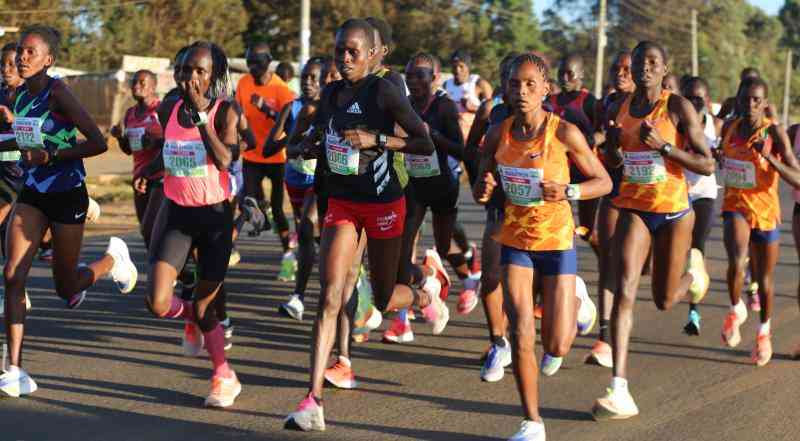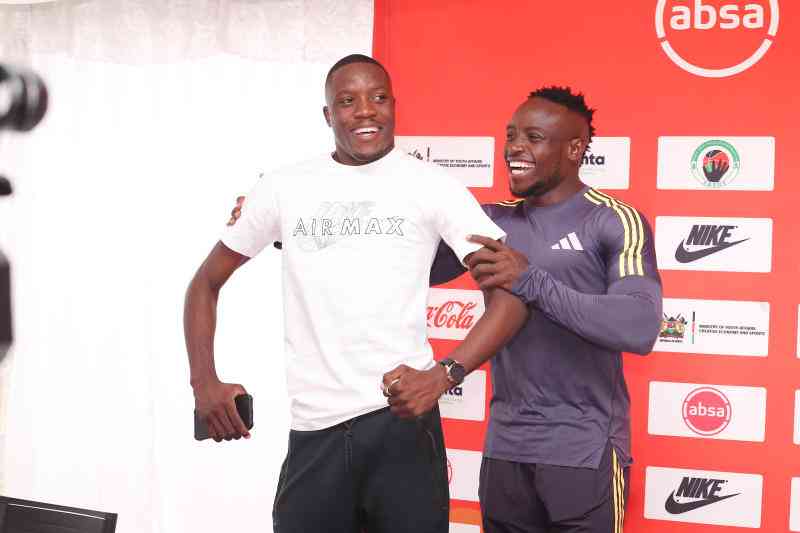 |
|
Gor Mahia vs AFC leopard darby in 2012.PHOTO/DENNIS OKEYO |
Exactly four years ago, the pain of losing loved ones still lingers among Kenyan football fans.
On October, 23, 2010, enthusiastic football fans streamed in their droves to Nairobi’s Nyayo National Stadium to catch a glimpse of Kenya’s Mashemeji Derby.
Gor Mahia FC were playing arch-rivals AFC Leopards. Unbeknown to the fans, the day would turn to be Kenya’s darkest in its sporting history.
Over the years, such a fixture has generated enormous excitement and on this day, things were not any different. AFC Leopards had won the first leg of the league fixture in May following a last-minute glitz of a goal from Congolese Dumonde Selenga.
Gor Mahia were therefore getting into the second leg to avenge their loss with the Kenyan Premier League (KPL) title at stake.
And so a totally sold-out Nyayo Stadium was getting drenched in the heavy rains just before kick-off. The atmosphere inside - as queues of fans still meandered out to gain access - was electric, tension sky-high as an infectious excitement engulfed the stadium.
TENSE MOMENTS
A tightly-contested encounter was witnessed on the pitch with attacks and counter-attacks from both teams serving spectators with tense moments. Peter Wainaina conducted the AFC Leopards’ orchestra while Gor Mahia’s George ‘Blackberry’ Odhiambo was an incessant threat on every attack.
What had become a regular spectacle in these days of glory-seeking among fans happened on the half hour mark. An invader stormed onto the pitch wailing and throwing his arms as if his village had been attacked by marauding man-eaters and his entire flock of sheep devoured.
STOP THE MATCH
As it would be known later, the wailing intruder was former international goalkeeper Mathew Ottamax Owino who, seeing the melee on Gate Two, rushed onto the pitch to get the referee’s attention to stop the match to allow for restoration of order at the troubled entrance.
Owino recounts: “I thought I had seen enough by the time I decided to storm the pitch. Fans were dying outside. Out of anguish I decided to go in to let everybody know.”
But Owino did not get any closer to the referee as stewards, ignorant of his motive, pounced on him with kicks and blows, dragging him out of the pitch. ‘We’ve seen enough of your type. Get out! Legend? Legend my foot!’
The cause of the stampede, according to Owino, was the anxiety of those who were still out by kick-off. The roar of the Gor anthem must have pierced through the damp skies, alerting fans - who were by then still outside either buying tickets or queuing up to get in - that the match was just about to start.
“I thought if the match had been stopped we would have saved lives. It is for that reason that I acted so,” says the ex-goalkeeper.
But centre referee of the day Isaac Ochieng’ differs.
“Stopping the match would have been like signing my death certificate,” says Ochieng’. He added: “In the absence of a public address system, about 95 per cent of those in the stadium had no idea what was happening outside. In fact many ignorantly applauded the stewards as they beat up Ottamax. They were already agitated by the temporary stoppage. How then could we communicate that there was trouble outside and that we were stopping the match?”
Gichohi Mwangi, a K’Ogalo fan confirms he only learnt of the fracas after the match. To Rashid Victor, another fan, were it not for the phone calls he received while in the stadium, he could not have known there was trouble.
But even to this date, the referee still feels the pain of officiating in a match that had fans dying at the gates. “When I eventually got to know what had actually happened, I was disconcerted. Losing lives where people are supposed to find entertainment is unpleasant. The thoughts still wear me down,” says Ochieng’.
Five bodies were picked from the ramshackle at Gate Two as three others succumbed to injuries in hospital. It was the worst tragedy to have hit the local sporting circles in Kenyan history.
Weeks of theatrical blame game followed, nobody wanted to take responsibility. The authorities only fell short of blaming the victims (fans) for the mayhem.
Four years on and still that rainy evening is fresh in our memories; the squeaking turnstiles as they break down, the crying fans as they are stumbled upon, the creaky gate as it bows to pressure - all still clear as if it were just yesterday.
What really happened? Who was responsible? Could it have been avoided? Whatever the case, the football fraternity and indeed bereaved families are still waiting for an inquest to, at least, know the truth so that justice can be served but above all to avoid such incidences in future.
Twitter: @TomBwana
 The Standard Group Plc is a multi-media organization with investments in media
platforms spanning newspaper print operations, television, radio broadcasting,
digital and online services. The Standard Group is recognized as a leading
multi-media house in Kenya with a key influence in matters of national and
international interest.
The Standard Group Plc is a multi-media organization with investments in media
platforms spanning newspaper print operations, television, radio broadcasting,
digital and online services. The Standard Group is recognized as a leading
multi-media house in Kenya with a key influence in matters of national and
international interest.
 The Standard Group Plc is a multi-media organization with investments in media
platforms spanning newspaper print operations, television, radio broadcasting,
digital and online services. The Standard Group is recognized as a leading
multi-media house in Kenya with a key influence in matters of national and
international interest.
The Standard Group Plc is a multi-media organization with investments in media
platforms spanning newspaper print operations, television, radio broadcasting,
digital and online services. The Standard Group is recognized as a leading
multi-media house in Kenya with a key influence in matters of national and
international interest.










